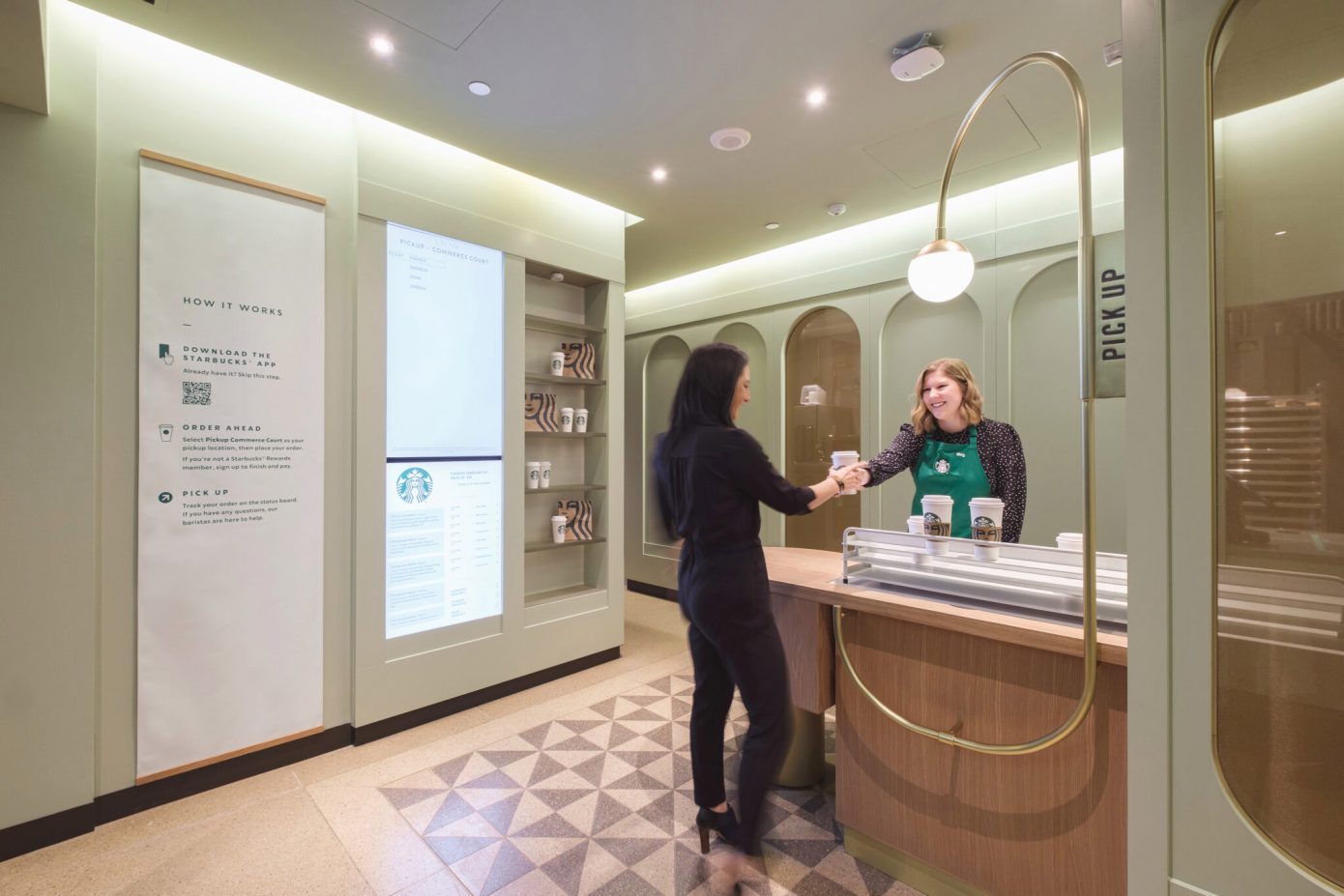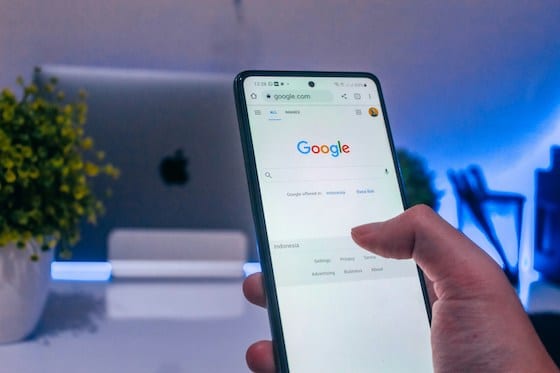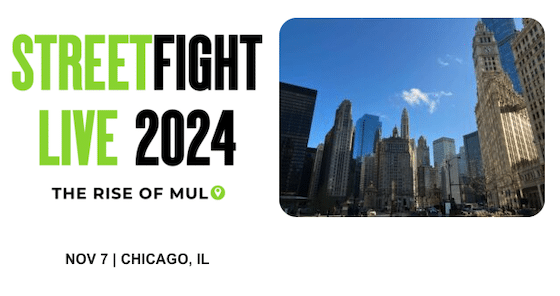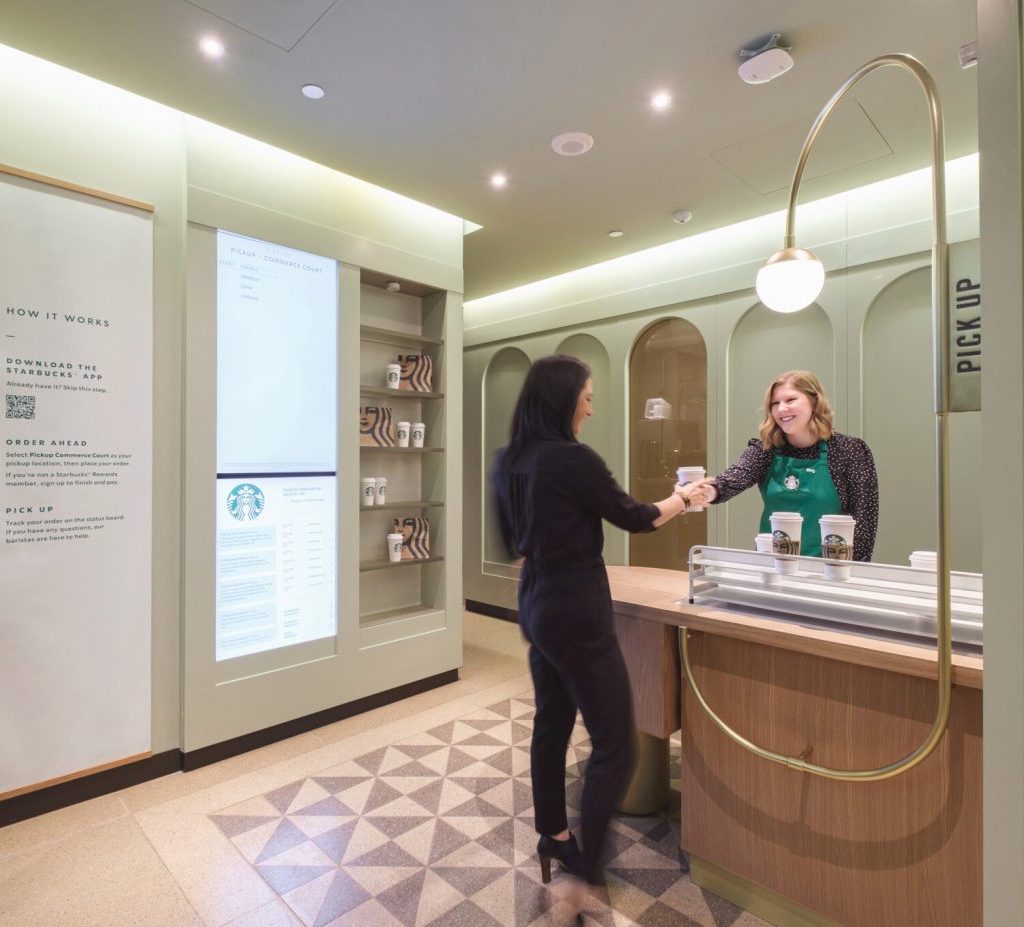This is the latest in Localogy’s Skate To Where the Puck is Going series. Running semi-weekly, it examines the moves and motivations of tech giants as leading indicators for where markets are moving. Check out the entire series here, and its origin here.
Last September, we asked “Is order ahead the new ‘check-in?‘” The thought is that mobile orders and payments for offline pickups continue to emerge, which includes everything from coffee to curbside pickup. “Check-in” of course refers to the early 2010’s fad of gamified check-ins to local waypoints a la Foursquare.
Benefits and drivers include consumers’ app savvy, millennial sensibilities, more QSR and retailer adoption, and smart logistics. The latter is where things get interesting because businesses that lean into this trend can work towards streamlined operations and yield optimization (sort of similar to cloud kitchens).
Those factors and micro-economic perks aren’t new concepts, but order-ahead’s relevance and demand signals are taking new forms in the Covid-Era. We’re witnessing forced adoption of order-ahead (along with several other technologies) that could end up inflecting its adoption in positive and permanent ways.
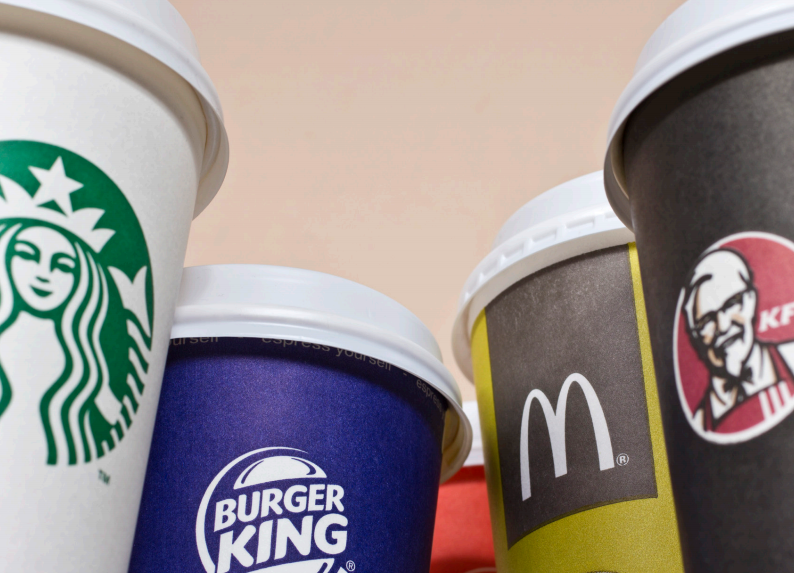
Fast Lane
Pre-pandemic, Starbucks has been the poster child of order-ahead functionality, which has also incidentally been the biggest killer app for mobile payments (along with Uber). After seeing the prevalence and traction of mobile order-ahead and “skip the line” transactions, it’s even begun to offer mobile-order-only locations.
As we wrote in September:
For example, Starbucks — today’s biggest order-ahead exemplar — has benefited from offering it. In addition to customer loyalty, it’s able to fulfill more orders than the physical capacity of its locations sometimes limits. It’s even gone as far as to open high-yield order-only locations.
One of the advantages is, again, unit economics. It’s purpose-built for expedited order fulfillment for hurried coffee drinkers uninterested in frills. It eschews the loungey interiors and folky soundtracks of regular Starbucks locations for a low-overhead alternative that just pumps out coffee all day via mobile orders.
Of course, there’s still the option for the more casual Starbucks experience for those that want to lounge, work, or feed on free WiFi. But having the two tracks optimizes demand levels for each persona and provides a sort of “fast lane.” for those who just want their coffee; and a slower-paced environment for those who don’t.
New York’s Bandit Coffee is also applying this model but without both “tracks.” Its primary model is the order-only no-frills approach. Its marketing angle is that it passes the overhead-savings on to consumers in the form of cheaper coffee. This model is also fairly common in China through Luckin Coffee and others.

Doubling Down
Back to Starbucks, last week it accelerated the order-only trend by announcing it will close 400 stores and replace some of them with mobile-order-only locations. Aligned with the construct examined above, this was pandemic-driven and aligned with social distancing best practices. But the question is, will it be permanent?
By being forced into it, will consumers like what they see and develop order-ahead habits. We don’t know the answer but this question applies to several existing technologies that could get a permanent adoption boost from pandemic-born demand factors. More pervasive remote work could be one of those, for example.
If we apply this principle to traditional retail, it again invokes the curbside pickup model. But it goes deeper, including other social-distancing-friendly measures that could get their chance to shine. We’re talking in-aisle payments and cashier-less stores like Amazon Go. The irrationally-resilient checkout aisle could finally die.
The irony is that it could end up taking a global pandemic to save retail. The “retailpocalypse” that tore through the sector hit tech laggards hardest. Could forced tech adoption from a pandemic inadvertently and finally vault retailers into tech-savvy practices? An could that give them a fighting chance against Amazon?
That involves mobile-ordering but goes deeper into structural remodeling and fulfillment. And it could apply to all corners of retail, including QSR logistics (e.g. when to start making your coffee). As is often the case, it will start with multi-location brands, then move to the SMB sector where consumers will come to expect it.
We already know that SMBs have a greater receptivity now to new technologies — e-commerce specifically. The latest wave of Localogy’s Modern Commerce Monitor validates that (see below). The message to the SMB SaaS world and anyone working with SMBs: Start looking at and developing mobile-order competency now.

